Summary of Lavinia Fontana
Fontana belonged to the Bolognese Mannerist school and is thought by many to be the first professional female artists, working on many prestigious private commissions for Bolognese and Roman nobility, and for foreign dignitaries (including the King of Spain). Painting throughout her eleven pregnancies, she produced large-scale portraits that are notable for their luminous coloring and for her attention to the fine decorative detail in clothing and jewelry. She complemented her portraits with numerous religious paintings, including altarpieces and small devotional works, and mythological scenes. In what was an unprecedented honor, Fontana's reputation was confirmed in her own lifetime when she was admitted into the illustrious guild for painters in Rome, the Accademia di San Luca, the first woman to achieve such an award.
Accomplishments
- Working in Bologna and Rome, Fontana is regarded as the first woman artist to make her name working under the same commercial conditions as her male counterparts. She was, for the first 20 years of her career, the preferred portraitist of Bolognese noblewomen and prominent members of the University of Bologna. Later, her reputation having preceded her, Fontana arrived in Rome where she took up the position of portraitist at the court of Pope Paul V.
- In her elongated figures and exaggerated perspective, Fontana's early paintings reveal the influence of her father and tutor, the Mannerist, Prospero Fontana. But her works also deviated from those of her father most notably in her fine eye for detail and in her ability to reproduce on canvas the intricacies of the fabrics, textiles and jewelry worn by her illustrious female sitters. Today her paintings are treasured by fashion historians as authentic records of the Italian fashions of the time.
- Fontana is thought to be the first female artist to paint nudes, and quite possibly the first female artist to bypass strict social conventions for women by using live nude models. In what is now one of her most famous paintings, Minerva Dressing (1614), the naturalistic rendering of the nude female figure strongly suggest that she had studied the nude female anatomy from life.
- Although known principally as a Mannerist, Fontana was sometimes obligated, following the Catholic church's Counter-Reformation act, to produce devotional pieces that eschewed the aesthetic "excesses" of Mannerism in favor of the High Renaissance preference for balance and symmetry. Works such as Holy Family with Saints Margaret and Francis (1578) demonstrate Fontana's mastery of these techniques (and, of course, her adaptability).
The Life of Lavinia Fontana
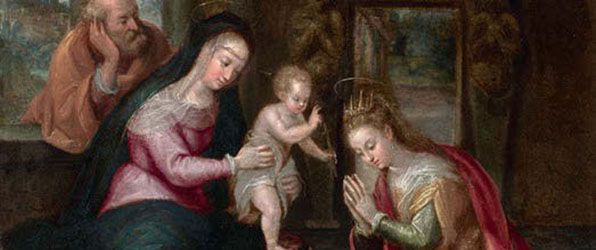
In a letter to the Medici duchess Bianca Cappello written in 1585, Friar Filippo Barbieri wrote: "Although there are many portraits by many worthy men that have been made of your Highness, none have ever been able to capture the truth [...] However, a new Apelles has arrived in the form of a genteel and in this art most skilled creature of a gracious young woman called Fontana [...] I was particularly amazed by those portraits by her hand".
Important Art by Lavinia Fontana
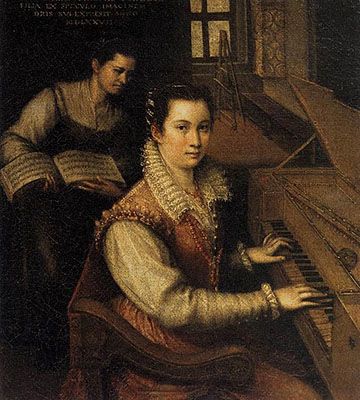
Self-Portrait at the Spinet
In this, the first of two early self-portraits, Fontana depicts herself sitting, playing the spinet (a type of small clavichord). Dressed in plush red and white clothing, she looks directly and confidently into the eyes of the viewer. Behind her, over her right shoulder, a female servant holds open a musical score. In front of the window, at the top right of the frame, sits a painter's easel. An inscription at the top left of the frame reads "Lavinia, the unmarried daughter of Prospero Fontana, took this, her image, from the mirror, 1577".
It is interesting to understand this painting within the specific circumstances of its production. Fontana painted the work as a gift to be sent to her fiancé's father, Severo Zappi, shortly after their betrothal (it was a sort of self-advertisement). The spinet indicates her musical talent, while the easel confirms her skill as a painter. The use of the Latin inscription tells us that she is an educated woman. The inclusion of the servant, and the elegant clothing and lavish jewelry, are final confirmation of her position as a "well-to-do" young woman. Red was also the normal color of wedding dresses in Bologna at the time, while sitting on the spinet, is a piece of coral carved into the form of a love-knot, symbolizing the engagement. Upon receipt of the painting, Severo wrote that Fontana was "not fair and not ugly, but just in the middle, as women have to be".
Oil on canvas - Accademia di San Luca, Rome, Italy
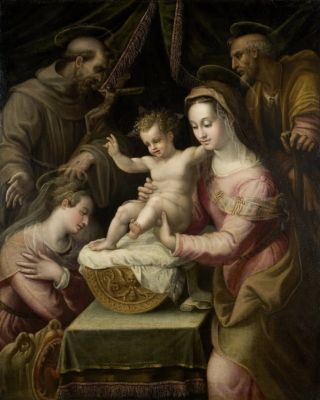
Holy Family with Saints Margaret and Francis
In Holy Family with Saints Margaret and Francis, Fontana presents the Madonna and child in an intimate domestic scene. Christ is carefully cradled by his mother while behind her Joseph looks on. To the left, Saint Margaret, who is joined by a roaring dragon, and Saint Francis, bow their heads in a gesture of worship. Although it shows a scene relating to childbirth, Saint Margaret being the patron saint of childbirth (having escaped from the belly of the dragon using her crucifix as a makeshift sword), Fontana's painting relates not just to Christ's birth, but to his death also. Mary and Margaret are caring for the child and caught up in the bliss of the present. This is further emphasized by Fontana through her use of soft lighting. However, standing back in shadows, Joseph and Francis appear unmoved by the scene of maternal happiness. They are not contemplating the present, but the future and the day of crucifixion. Curator and author Margaret A, Samu suggests that Fontana's "inextricable merging of these signs of the birth, death, and resurrection of Christ may reflect her contemplation of the recent birth and subsequent death of her own first-born child in the year before she painted the Holy Family".
Fontana is known principally as a Mannerist. The Mannerist style (which originated in Florence and Rome) was a reaction against the naturalism of the High Renaissance masters and questioned the idea that the great man (namely the artist) was God's human agent. The Mannerists used art to explore matters of aesthetics, and to create works that appealed to the emotions over the intellect. Mannerist art thus shunned the emphasis on accurate mathematical proportions and picture perspective in favor of a flattened picture plane that better suited lush coloring and fine decorative patterns.
Yet (and in what surely amounts to a testament to the artist's adaptability) Samu says of this painting that, "Fontana had to adhere scrupulously to the newly defined doctrines of the Church that arose out of the 1545-1562 Ecumenical Council of Trent". As she explains: "Like other artists of her period, Fontana responds to the artistic decrees of the Counter-Reformation by turning away from the excesses of the Mannerist style in which she had been trained. Instead, she uses linear perspective and foreshortening to create a realistic sense of spatial recession that clearly defines the setting. In addition, she gives her figures the modest dress and pious decorum that are appropriate to the painting's religious subject matter. By creating a balanced, nearly symmetrical composition with strong upward diagonals, she emphasizes the centrality of Christ to the devotional image. The linking of her figures by gazes and graceful gestures shows that, like other Bolognese artists, she was influenced by the work of the High Renaissance artist Correggio".
Oil on canvas - Davis Museum (Wellesley College), Wellesley, MA, US
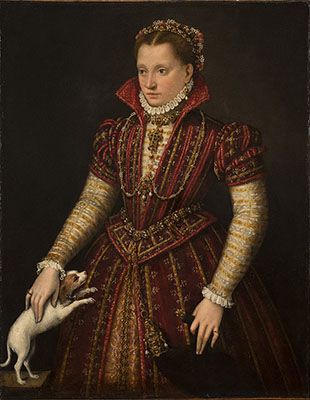
Portrait of a Noblewoman
Portrait of a Noblewoman presents an unidentified lady in sumptuous red dress and jewelry in three-quarter length, standing against a black background. She is petting a small dog with her right hand. The brown and white dog stands on its hind legs on a wooden table, with its front paws upon the woman's skirt. She gazes off fixedly to the left side of the frame. In addition to her regular jewelry, the subject wears around her waist a cord belt from which hangs a fine jeweled item. It is either a jar to hold perfume (to ward off fleas) or a bejeweled pelt of a marten (a small, highly coveted type of weasel, similar to a mink).
This painting is an excellent example of Fontana's portraiture. She was able to depict exquisite clothing and jewels in fine detail, showing off the nobility of her sitters. As her career progressed, her use of color became more Venetian, that is, more vivid, as in the works of the Carracci brothers, whom she likely knew through their connection with her father's workshop. We can surmise that this was a betrothal or wedding portrait, as red was the typical color of Bolognese wedding dresses, and dogs symbolized marital fidelity. The use of a traditional Bolognese wedding dress, and the lack of lace (which was not produced in Bologna, but in Venice) indicates the bride's family's place as integral to the local economy. Commenting on the picture's compositional qualities, meanwhile, historian Elizabeth Lev observes that the inclusion of the dog "balances the status of the sitter with charming and humanizing touch".
Oil on canvas - National Museum of Women in the Arts, Washington, D. C.
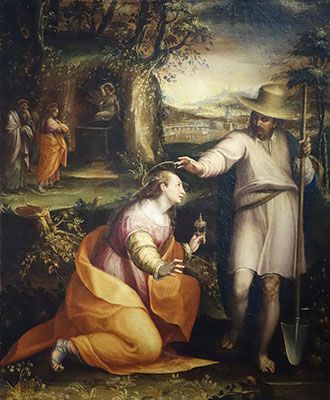
Noli Me Tangere (Touch me Not)
Here, Fontana presents two Easter scenes simultaneously. The first, in the foreground, is the moment when Mary Magdalene encounters the resurrected Christ in a garden and mistakes him for a gardener. Upon realizing his true identity, she reaches out to him in disbelief, and he tells her "touch me not" (the title of the work). Fontana made the unusual choice to depict Christ barefoot in modern gardening clothes (a wide-brimmed straw hat, simple tunic and a spade). He reaches his hand over Mary Magdalene's head as if blessing her. In the background, we see her again, followed by Jesus's mother Mary (who is weeping with her hand over her face) walking toward his tomb, inside of which is a glowing angel.
This work demonstrates features of the Mannerist style in which Fontana usually painted, with the use of vivid colors (as in the orange and pink of Mary Magdalene's robes), and of elongated bodies in contorted, strained, and/or curving poses (as seen in the S-curve of Jesus' body). Her treatment of the scene is much warmer and more tender than other, more formal, versions that have been executed by other artists (including Titian, Correggio, Perugino, and Fra Angelico), and foregrounds Mary Magdalene as the leading figure (as opposed to Jesus). Mary Magdalene's outstretched arm invites the viewer into the scene. The historian Franco Mormando writes, Fontana's decision to present Christ as a literal gardener reminds us that he "is the gardener of the human soul, eradicating evil, noxious vegetation and planting, as St. Gregory the Great says, 'the flourishing seeds of virtue'".
Oil on canvas - Galleria degli Uffizi, Florence, Italy
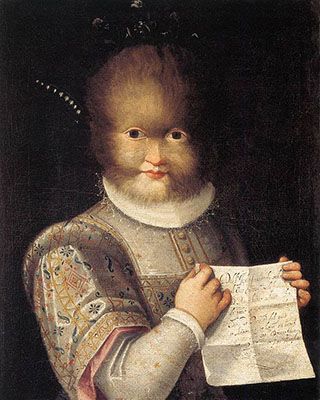
Portrait of Antonietta Gonsalvus
This bizarre portrait depicts Antonietta Gonzalez, a girl from the Canary Islands who, along with several of her family members, including her father Petrus Gonzalez, suffered from a rare genetic condition known as hypertrichosis (more commonly referred to as "werewolf syndrome"). The condition results in the growth of excessive hair all over the body and face. At the time, hypertrichosis was considered to be either a divine gift (rather than demonic curses) or something of a scientific curiosity. Antonietta and her family were thus welcome members in European courts. Fontana paints the girl (no older than ten years of age) with a sweet, childlike expression, gazing out amicably at the viewer, while holding up to her chest a piece of paper that explains some of her personal history.
The historian Merry Weisner-Hanks explains how Fontana met young Antonietta in Parma, where the girl and her family were members of the court of Lady Isabella Pallavicina, the Marchesa of Soragna. The portrait exemplifies Fontana's ability to convey a sense of tenderness in her sitters, no matter their appearance. Historian Enrico Maria Dal Pozzolo adds that it is a portrait with a high level of emotional involvement, and it indicates a strong sense of familiarity between the sitter and the artist. It is possible that, as female painters were in and of themselves a sort of rarity at the time, the two women bonded over their sense of being "outsiders".
Oil on canvas - Musée du Château, Blois, France
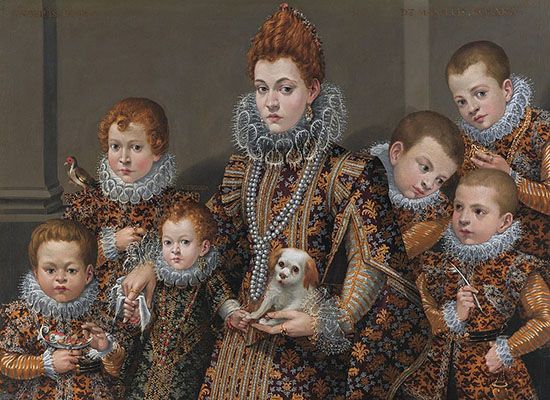
Portrait of Bianca degli Utili Maselli with Her Six Children
In this family portrait, Bianca degli Utili, wife of the nobleman and Roman cavalier Pierino Maselli, is presented at the center of the frame, holding a small white dog. She is flanked by six of her children. (In fact, she died in September 1605, aged 37, after giving birth to her nineteenth child.) The three smaller children (two boys and one girl) on the left sit still and gaze calmly at the viewer, while the three boys on the right are more playful and distracted, two of them looking at one another. Each child holds a different object, likely indicating their future careers, such as the boy in the upper left who holds a small bird attached to a chain (possibly a goldfinch which would symbolize the Passion of Christ, indicating that the boy is destined for a spiritual career).
This portrait is significant for two further reasons. First, it is one of the most striking examples of why Fontana's art is a treasure-trove for fashion historians, as she renders, in exquisite detail, every stitch and thread of the extravagant clothing, down to the floral headband, worn by her sitters. The boys all wear matching outfits, and mother and daughter wear matching dresses and ornate jewelry. As arts writer Vlad Maslov notes, "while the cuffs of all the clothes differ slightly, all [the sitters] wear very similar sumptuous ruffs and particular attention has been paid to depicting the play of light and shadow on these".
Second, the portrait exemplifies the way in which Fontana's portraits were highly sought after in Italy at the time of the Counter-Reformation, when moral virtues and family values were to be foregrounded in art. As Maslov writes, "despite the elegance of the clothes and the formal setting, the portrait stands out for its sympathetic approach to the sitters and for the tender family context in which they are shown". The dog (something of a motif in Fontana's portraits) symbolizes Bianca's fidelity to her husband. The similar patterning and colors of the sitters' clothing indicates the unity of the family. A particular sense of warmth and affection can be felt between mother and daughter, as the child's right hand holds onto the index finger of her mother's, and the left hand hold the paw of the dog. The daughter, "Verginia", is the only member of the family to have her name written above her head, indicating that the portrait may have been painted in her honor.
Oil on canvas - Private collection
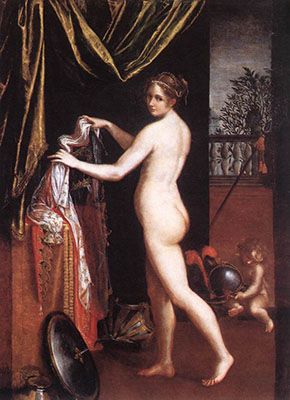
Minerva Dressing
Minerva Dressing was the last painting that Fontana completed before her passing. In the image, Minerva, the Roman goddess of wisdom, the arts, war strategy, and commerce, stands in her dressing room, having just cast off her armor, which lays strewn across the floor. She is picking up a delicate yet extravagant robe, indicating that she is rejecting war in favor of peace. Her back is turned to the viewer, and she gazes softly at us over her left shoulder. A small putto sits on the ground in the doorway at the right-hand side, holding Minerva's helmet. Through the doorway in the distance, the dome of St. Peter's Basilica is visible.
Fontana produced several mythological paintings later in her career, typically portraying rich clients as classical Gods and Goddesses like Minerva, Mars, and Venus. As historian Elizabeth Lev notes, her "subject matter changed during her Roman sojourn. Perhaps the shift was due to her absorbing the grandeur of Michelangelo and the ancient monuments. Perhaps it was due to the abundance of female saints honored in Rome's hundreds of churches. Or perhaps it had to do with the influence of her contemporary Torquato Tasso, the celebrated poet whose book on heroic women had been published three years earlier. Whatever the cause, Lavinia's works began to feature powerful women, from her stirring Judith with the Head of Holofernes to the massive Queen of Sheba Meeting Solomon".
Fontana had moved her family to Rome in 1604 (soon after the death of her father) where (following the death of Pope Clement VIII in 1605) she worked chiefly for the Borghese family. Pope Paul V, the former Cardinal Camillo Borghese, had been Bologna's papal legate and was the godfather to Fontana's youngest son. Pope Paul introduced Fontana to his nephew, Cardinal Scipione Borghese, and it was for him that she painted Minerva Dressing. It is thought by some historians to be the first female nude painted by a woman in Italy. It is unclear, however, if she painted from a live model (it being socially unacceptable and improper for women artists to be exposed to nudity). There is a naturalism to Minerva that has given rise to further conjecture that a family member might have modelled for her. If she had studied a professional live model, then this work would make her the first known woman artist to do so - that would be perhaps the most fitting end to an already unique career.
Oil on canvas - Galleria Borghese, Rome, Italy
Biography of Lavinia Fontana
Childhood
Lavinia Fontana was one of three children born to Bolognese painter and teacher Prospero Fontana. He worked on projects, including Florence's Palazzo Vecchio, with painters Perin del Vaga, Taddeo Zuccari, and Giorgio Vasari, while his patrons included Pope Julius III, France's Henry II, and Caterina de Medici. Lavinia's mother, Antonia di Bartolomeo de' Bonardis, came from a successful and well-established family of printers and publishers. The family's comfortable lifestyle was tinged with tragedy, however, when Lavinia's older sister, Emilia, died aged sixteen, while records show that her brother, Flaminio, died sometime before 1577.
The historian Adrianna Hook Stephenson describes how "Fontana was baptized in the cathedral of San Pietro in Bologna, on August 24, 1552 [and] in attendance at the baptism were two sponsors, Signor Agostino Hercolani and Signor Andrea Bonfiglioli, both members of the Bolognese patriciate". She surmises that Prospero's choice of "two male members of the local nobility to recognize the birth of his daughter was auspicious, given that Lavinia Fontana's later artistic career was characterized by the frequent support and patronage of Bologna's aristocracy and by her intimate relationships with Bolognese noblewomen". Stephenson continues that her father's friendship with these figures, and also the young Gabriele Paleotti (a future archbishop of Bologna), and the prominent academician Armodio de Santi, "was instrumental to the successful career of his daughter, who enjoyed patronage from the secular, religious, and scholarly circles of Bologna".
Education and Early Training
Prospero, who ran a successful studio in Bologna and taught at the School of Bologna, tutored all three of his children, but it soon became evident that Lavinia possessed the greatest natural talent and he focused his energies on training her. His other pupils included local painters Lorenzo Sabbatini and Annibale Carracci as well as the Flemish sculptor Giambologna. Besides her artistic education, Fontana undertook academic teachings, becoming a student of letters, mathematics, geometry, and Latin. She also studied music, learning to play the spinet (a type of small clavichord).
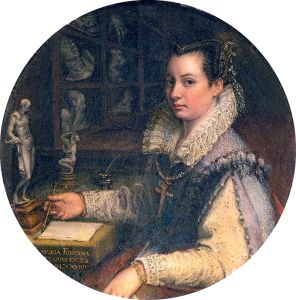
As-well-as enjoying the support of her father, Lavinia was fortunate to have grown up in Bologna at a time when women artists in other European cities faced greater barriers. Bologna, the second largest city of the Papal State, and whose patron saint was convent painter, Caterina dec Vigri, was a progressive city that had welcomed women into its university since it opened (in 1158). Fontana was a successful student, receiving her doctorate in 1580.
Prospero had served as head of the Bolognese painters' guild on no less than five different occasions and his social and artistic aspirations were well known. Nevertheless, he suffered financial hardships, with Giorgio Vasari even commenting on his inability to pay back loans taken out to finance a trip to France in his 1568 edition of Lives of the Artists. Stephenson suggests that it was likely for "increasing old age and infirmity along with financial considerations, that Prospero Fontana trained his daughter Lavinia as a professional artist". Indeed, Fontana's earliest works were small devotional pieces on copper plates, and portraits for clients brought to her by her father. Prospero also adopted the strategy of giving away her work for free, or for a nominal fee, as a way of raising her profile amongst potential patrons.
Mature Period
Stephenson writes, "In her father's workshop, Lavinia learned the basic skills of design, media preparation, and painting execution required of all young artists [and it] is significant that Lavinia learned the importance of drawing as a preparatory skill from her father". (Indeed, the 40-or-so extant Fontana preparatory portrait drawings in circulation today are testament to her technical skill and her close observance of individual physiognomy.)
But despite her abundant talents, Prospero knew that to have a career as a painter, and without being a member of a court or convent, his daughter would need to take a husband. In 1577 she married one of Prospero's students, a local painter from a family in Imola, Gian Paolo Zappi, son of a wealthy grain merchant. Prospero negotiated with the Zappi family that, in lieu of a dowry, Fontana would paint to earn an income. They also agreed to the unusual arrangement of having the newlyweds live with the bride's family (as opposed to the groom's). Under this arrangement, both Lavinia and her husband could continue learning from Prospero. The Fontana-Zappi marriage contract (dated February 14, 1577) states: "Signor Gian Paolo is obliged to come and live in Bologna, and to stay and live with Signor Prospero [...] and the earnings that Gian Paolo and Madonna Lavinia make from art will be converted to the benefit of Signor Prospero". Sadly, as historian Laura M. Ragg notes, Gian Paolo turned out to be "a talentless 'simpleton', and he soon gave up pursuit of his own artistic career in order to support his wife with hers. While he sometimes painted drapery and background details of Lavinia's works, his primary role was that of being her agent, and of raising their eleven children".
Curator and author Margaret A. Samu writes, that for her devotional piece, Holy Family with Saints Margaret and Francis (1578), Fontana "painted the Holy Family [of the title] just as her career was beginning to flourish", and as an "assertion of her arrival as an artist, the painting prominently bears her signature and the date: LAVINIA FONTANA DE ZAPPIS FACIEBAT MDLXXVIII". Samu concludes that the "signature not only allows us to date the painting with ease but also reveals something of the confidence of this artist, who signs her work like a master so early in her career". Indeed, by the early 1580s Fontana was highly sought after by the Bolognese nobility and she earned impressive figures for her portrait work. She was known to have especially close and warm relationships with female sitters (indeed, the Duchess of Sora Constanza Sforza Boncompagni, served as namesakes and/or godmothers for Lavinia's own children) who perhaps felt more at ease sitting for a female artist.
Late Period
In 1586, Lavinia visited Rome for the first time. While there her work caught the attention of Spanish Cardinal Francisco Pacheco and, through him, she received commissions for the King of Spain. She returned to Rome in the Jubilee year of 1600 and received a commission to paint the altarpiece for a Dominican chapel built in honor of St. Hyacinth of Poland. As historian Elizabeth Lev explains, "This was a moment of triumph: Lavinia had broken through the bastions of Rome's artistic boys' club to leave her mark in one of its oldest and venerated churches".
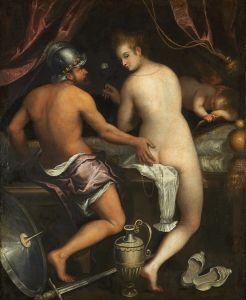
Following her father's death in 1603, Fontana and her family relocated permanently to Rome at the invitation of Pope Clement VIII. After he died two years later, the incumbent Pope, Pope Paul V, continued as her patron, appointing her as Portraitist in Ordinary (the title given to the principle painter to the Pope) at the Vatican. According to Lev, Fontana was also "inducted into the all-male Academy of St Luke [Accademia di San Luca] for painters, an honor that eluded Caravaggio". She was commissioned to paint another altarpiece, this time a twenty-foot work titled The Stoning of St. Stephen Martyr, for the Basilica of San Paolo Fuori le Mura (an important pilgrimage site that was unfortunately destroyed, along with the painting, in a fire in 1823).
In 1611 the Roman sculptor Felice Casoni produced a bronze portrait medallion in Fontana's honor. On the medal, she is depicted with wild hair, symbolizing the "frenzy" of divine inspiration and artistic genius. Fontana passed away in Rome on August 11, 1614, at the age of sixty-two, and was buried at Santa Maria sopra Minerva. Lev writes, "How fitting that this church, built upon a temple and dedicated to the wisdom of women, became the resting place of the woman artist who had it all: fame, family and faith". Of her eleven children, she was survived only by her sons Flaminio, Orazio, and Prospero. Co-writing the text (now destroyed) for her tombstone, they referred to their mother simply as a painter whose "fame reached outside the feminine sphere".
The Legacy of Lavinia Fontana
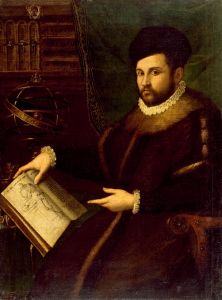
Given that she worked directly for private clients (rather than as a member of a convent or court), Fontana is recognized as the first female career artist in history. Her decorative Mannerist works are renowned for their fine attention to detail, particularly in her rendering of clothing and jewelry. Her nuanced, and vividly colored works influenced later artists such as the Bolognese Baroque painter, Alessandro Tiarini. Today these pieces serve as a vital source of primary research for fashion historians. Her more austere religious paintings, meanwhile, represented Christian parables at a time when the Counter-Reformation act, laid down by the Roman-Catholic church, decreed that artists must "instruct the faithful" and excite them "to adore and love God, and to cultivate piety". Fontana is also significant for being the first female artist to paint female nudes, and perhaps even the first to use live nude models.
Historian Adrianna Hook Stephenson writes: "Compared to other Bolognese women artists like the sculptor Properzia de'Rossi and the painter Elisabetta Sirani, Lavinia's life and career was relatively free from personal drama, as she was not portrayed in contemporary accounts as a scorned lover, nor did she die prematurely. She was in fact a product of both her time and culture, and although she did conform to prescribed female behavior by becoming both a wife and a mother, she also transgressed the confines of her sex by becoming a successful, professional artist". Indeed, with over 100 documented works in existence, Fontana's is the largest known oeuvre for any female artist prior to 1700. In 1979, Fontana was selected by feminist artist Judy Chicago to have her name appear in her famous installation The Dinner Party, a large-scale work that celebrates the achievements of 1,038 (actual and mythical) female figures.
Influences and Connections

-
![Correggio]() Correggio
Correggio -
![Sofonisba Anguissola]() Sofonisba Anguissola
Sofonisba Anguissola - Prospero Fontana
- Ludovico Carracci
- Caterina Vigri
- Pope Clement VIII
- Pope Paul V
- Cardinal Scipione Borghese
- Bianca Cappello
- Friar Filippo Barbieri
- Alberto de' Rossi
- Alessandro Tiarini
- Aurelio Bonelli
- Pope Clement VIII
- Pope Paul V
- Cardinal Scipione Borghese
- Bianca Cappello
- Friar Filippo Barbieri
Useful Resources on Lavinia Fontana
- Lavinia Fontana: A Painter and Her Patrons in Sixteenth-Century BolognaOur PickBy Caroline P. Murphy
- Women Artists, Their Patrons, and Their Publics in Early Modern BolognaOur PickBy Babette Bohn
 Ask The Art Story AI
Ask The Art Story AI








